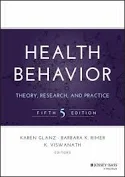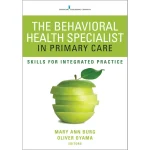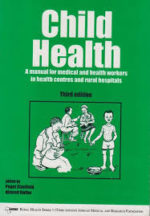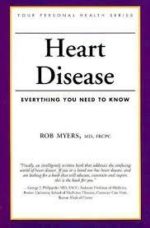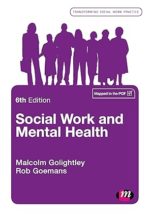-
Maitland’s Vertebral Manipulation, 8th Edition Management of Neuromusculoskeletal Disorders – Volume 1
KSh 21,840.00The legacy of Geoff Maitland and his seminal work, Vertebral Manipulation, continues in this eighth edition, with Elly Hengeveld and Kevin Banks leading an international team of experts who demonstrate how to manage vertebral neuromusculoskeletal disorders using the principles and practice of the Maitland Concept. Together, they ensure the heart of the Concept beats on by promoting collaborative decision-making with the patient at centre and emphasizing the art and science of observation, listening, palpation and movement skills.
A key feature of the new edition focuses on a more evidence-based and analytical view of the role of mobilization and manipulation in clinical practice The authors have written in a way that reflects their application of the Maitland Concept and how they have integrated techniques in the light of advancement in professional knowledge. Each chapter stands alone as a ‘master class’.
The text is systematically arranged focusing on detailed assessment, clinical reasoning and re-assessment to determine the physical dysfunction and efficacy of manipulative physiotherapy techniques, while also advocating continuous communication and interaction. Techniques of passive mobilization are also described, specifically designed around the individual patient’s condition.
All the chapters are written from a clinical perspective and review the evidence which informs how to deal with and manage spinal and pelvic pain as they present to the practitioner. Furthermore, each vertebral region (cervical, thoracic, lumbar, sacroiliac/pelvic) is considered from the point of view of best practice in analysing and hypothesising subjective data, examination, treatment and management of spinal pain conditions.
Brand new to the eighth edition is the addition of a companion website – Maitland’s Manipulation eResources (www.maitlandsresources.com) – providing access to a range of valuable learning materials which include videos, MCQs, interactive case studies, research links, and bonus chapters
“This text would be an excellent resource to any practising physiotherapist or health professional dealing with spinal disorders. It would enhance the manual skills and clinical reasoning of any therapist regardless of their experience. It is concise, clear to follow and covers each spinal section extensively with evidence-based practise and thought stimulating case studies and examples throughout.” Reviewed by: Tracy Ward, MCSP, BSc (HONS), MSc, Senior Physiotherapist and Clinical Pilates Specialist, BMI Healthcare Albyn Hospital, Aberdeen, Date: Oct 14
“Drawing on a wide spectrum of literature and expert guest authors to explain the reasoning behind treatment techniques this edition takes the reader on a wonderful clinical journey way beyond the Maitland concept.” Reviewed by: Tobias Bremer Date: 24/07/2014
-
Health Behavior: Theory, Research, and Practice, 5th Edition
KSh 18,010.00Health Behavior: Theory, Research and Practice provides a thorough introduction to understanding and changing health behavior, core tenets of the public health role. Covering theory, applications, and research, this comprehensive book has become the gold standard of health behavior texts. This new fifth edition has been updated to reflect the most recent changes in the public health field with a focus on health behavior, including coverage of the intersection of health and community, culture, and communication, with detailed explanations of both established and emerging theories. Offering perspective applicable at the individual, interpersonal, group, and community levels, this essential guide provides the most complete coverage of the field to give public health students and practitioners an authoritative reference for both the theoretical and practical aspects of health behavior.
A deep understanding of human behaviors is essential for effective public health and health care management. This guide provides the most complete, up-to-date information in the field, to give you a real-world understanding and the background knowledge to apply it successfully.
- Learn how e-health and social media factor into health communication
- Explore the link between culture and health, and the importance of community
- Get up to date on emerging theories of health behavior and their applications
- Examine the push toward evidence-based interventions, and global applications
Written and edited by the leading health and social behavior theorists and researchers, Health Behavior: Theory, Research and Practice provides the information and real-world perspective that builds a solid understanding of how to analyze and improve health behaviors and health.18010
-
The Behavioral Health Specialist in Primary Care
KSh 14,014.00Patients with chronic conditions often need psychosocial support and brief counseling to help them make the lifestyle and behavioral changes required to prevent disease complications. This innovative text, with contributions from respected clinicians and researchers in all arenas of behavioral health, provides comprehensive training for all health professionalsóincluding those in medicine, nursing, social work, mental health, and clinical and health psychologyówho desire targeted evidence-based training in behavioral health skills. Rich case examples drawn from typical patient presentations demonstrate the relationship between physical and psychological health and the complexity of behavioral change in chronic illness.
This text is a timely, relevant, and practical resource for all members of the primary care team. It prepares team members to work in the model of patient-centered integrated care in accordance with the recommendations of the Affordable Care Act (ACA) and the National Committee for Quality Assurance (NCQA) medical home standards for identifying patient needs and providing coordinated and comprehensive patient care. The book focuses on knowledge and skills needed for working with the most common chronic conditions such as diabetes, obesity, chronic pain, cardiovascular conditions, sleep disorders, geriatric conditions, cancer-related conditions, and substance abuse. It includes chapters on epidemiological trends in chronic illness and systems medicine. Theories of health behavior and behavioral change and evidence-based interventions provide a foundation for skill development, followed by detailed coverage of the requirements for behavioral management of specific chronic conditions. Sample referrals and consultation notes provide concrete examples of how the behavioral health specialist might respond to a referral.
KEY FEATURES:
- Provides comprehensive graduate-level training for the role of Behavioral Health Specialist
- Describes the health promotion and counseling skills needed to function as part of an integrated health team
- Focuses on proficiencies needed for working with common chronic conditions
- Addresses the psychosocial components of primary care disorders
- Includes case examples demonstrating the relationship between physical and psychological health and the complexity of behavioral change in chronic illness
-
Gray’s Anatomy for Students-5th Edition
KSh 14,014.00Concise, readable text and an outstanding art program make Gray’s Anatomy for Students, 5th Edition, your go-to text for essential information in human anatomy. This fully revised volume focuses on the core information medical students need to know, in an easy-access format and with additional multimedia content to facilitate effective study and mastery of the material. A team of expert authors share a wealth of diverse teaching and clinical experience—all enhanced by more than 1,000 innovative, original illustrations by renowned illustrators Richard Tibbitts and Paul Richardson, who capture anatomical features with unrivalled clarity.
Key Features
- Helps you understand the practical applications of anatomical concepts through unique coverage of surface anatomy, correlative diagnostic images, and clinical case studies.
- Contains increased representation of diverse population groups throughout, incorporating a wider range of skin tones and important clinical considerations related to transgender and intersex individuals.
- Presents anatomy logically by body region – as well as bonus updated eBook chapters for each major body system to facilitate learning from a different perspective.
- Includes new and improved online materials such as self-assessment questions, medical and physical therapy clinical cases, a unique Interactive Surface Anatomy tool, and more.
- Provides fully revised and updated clinical content including numerous new In the Clinic boxes, images, and correlates throughout that reflect the latest advances seen in clinical practice. New and updated Clinical Cases are included in the accompanying enhanced eBook.
- Features an updated neuroanatomy eBook chapter, so you can learn key aspects of this challenging topic in the context of general anatomy.
Improves comprehension of complex cranial nerves with a visual map summarizing cranial nerve distribution and function. - Offers schematic drawings for key structures and topics in every chapter, providing an additional, simplified approach to introduce each topic—ideal for quick initial understanding and as a guide for your own anatomy drawings.
- Enables you to quickly review the basic concepts from each chapter with Conceptual Overviews.
- An eBook version is included with purchase. The eBook allows you to access all of the text, figures and references, with the ability to search, customize your content, make notes and highlights, and have content read aloud.
Evolve Instructor site with a downloadable image bank is available to instructors through their Elsevier sales rep or via request at https://evolve.elsevier.com.
-
Reading and Understanding Research Third Edition by Lawrence F. Locke (Author), Stephen Silverman (Author), Waneen W. Spirduso (Author)
KSh 10,500.00Ideal for students, novice researchers, or professionals, this indispensable resource serves as a road map for readers who need to analyze and apply research findings. It helps them think critically about the credibility of what they are reading by showing them how to identify problems and develop constructive questions.
Key Features
- Assumes no prior knowledge of research procedures
- Provides readers with a step-by-step format for decoding the complex language and formats used in reports and reviews
- Includes the most common formats for both quantitative and qualitative inquiry
- Offers both illustrative examples and powerful training exercises
- Gives specific attention to strategies for critically appraising reported research
- Presents completely updated references as well as an annotated bibliography
Intended Audience
This text is appropriate for both upper-level undergraduate and graduate students across the social sciences enrolled in introductory research courses as well as students in professional preparation programs.
Available with Perusall—an eBook that makes it easier to prepare for class
Perusall is an award-winning eBook platform featuring social annotation tools that allow students and instructors to collaboratively mark up and discuss their SAGE textbook. Backed by research and supported by technological innovations developed at Harvard University, this process of learning through collaborative annotation keeps your students engaged and makes teaching easier and more effective. -
Biological Bases of Human Behavior, The 1st Edition
KSh 7,420.00The Biological Basis of Human Behavior accomplishes what numerous introductory books have failed to do: present an evolutionary explanation of why it is we do what we do. This comprehensive book brings together a diverse number of traditionally separate disciplines including paleoanthropology, psychology, and sociology in its attempt to understand human traits. Rich in controversial topics, this text integrates subjects such as paleontology, speech, the structure of the brain, Eve, and the rather odd way in which humans reproduce. Written as a narrative, this excellent learning tool relates modern behavior to the past environments, stresses, and challenges still evident in the modern human world. For anyone interested in the biological bases of human behavior; psychology; or anthropology.
-
-
Heart Disease: Everything You Need to Know (Your Personal Health)
KSh 900.00Widespread and deadly, heart disease is a grim epidemic. Affecting parents, siblings, friends and co-workers, heart disease is so common that it is impossible to remain untouched by it. Heart disease is responsible for more than 37% of all deaths and is the leading cause of death in people over 65.
In Heart Disease, Dr. Rob Myers shows how to take control of the condition. For example, of the 50 million Americans who suffer from high blood pressure — the leading contributor to heart disease — only 35% know they have it. Yet, high blood pressure is easily detectable and usually controllable.
Heart Disease is a practical health guide that simplifies this disease’s biology and physiology and clearly explains the medial concepts and jargon often used by doctors in diagnosis and treatment.
Using detailed tables, sidebars and diagrams, Heart Disease provides comprehensive, accurate, safe and up-to-date information for patients and their families.
-
ICD-10 Volume 2: International Statistical Classification of Diseases and Related Health Problems : Instruction Manual
This first volume contains the classification at the three and four-character levels, the classification of the morphology of neoplasms, special tabulation lists for mortality and morbidity, definitions, and the nomenclature regulations. The volume also reproduces the report of the International Conference, which indicates the many complex consideration behind these revisions.
-
Health Behavior: Theory, Research, and Practice (Jossey-Bass Public Health)
The essential health behavior text, updated with the latest theories, research, and issues
Health Behavior: Theory, Research and Practice provides a thorough introduction to understanding and changing health behavior, core tenets of the public health role. Covering theory, applications, and research, this comprehensive book has become the gold standard of health behavior texts. This new fifth edition has been updated to reflect the most recent changes in the public health field with a focus on health behavior, including coverage of the intersection of health and community, culture, and communication, with detailed explanations of both established and emerging theories. Offering perspective applicable at the individual, interpersonal, group, and community levels, this essential guide provides the most complete coverage of the field to give public health students and practitioners an authoritative reference for both the theoretical and practical aspects of health behavior.A deep understanding of human behaviors is essential for effective public health and health care management. This guide provides the most complete, up-to-date information in the field, to give you a real-world understanding and the background knowledge to apply it successfully.
Learn how e-health and social media factor into health communication
Explore the link between culture and health, and the importance of community
Get up to date on emerging theories of health behavior and their applications
Examine the push toward evidence-based interventions, and global applications
Written and edited by the leading health and social behavior theorists and researchers, Health Behavior: Theory, Research and Practice provides the information and real-world perspective that builds a solid understanding of how to analyze and improve health behaviors and health -
Guidelines for drinking-water quality, 4th edition, incorporating the 1st addendum
The fourth edition of the World Health Organization’s (WHO) Guidelines for drinking-water quality (GDWQ) builds on over 50 years of guidance by WHO on drinking-water quality, which has formed an authoritative basis for the setting of national regulations and standards for water safety in support of public health.
It is the product of significant revisions to clarify and elaborate on ways of implementing its recommendations of contextual hazard identification and risk management, through the establishment of health-based targets, catchment-to-consumer water safety plans and independent surveillance.
This first addendum updates the fourth edition. Updates reflect new evidence and further, provides additional explanations to support better understanding and application of the guidance.
-
Social Work and Mental Health (Transforming Social Work Practice Series)
With 1 in 4 people experiencing a mental health problem in any given year, mental health is a more important part of social work training than ever before, and all successful social workers need to understand the core values, skills and knowledge that underpin excellent practice in a modern mental health system.
Written as an accessible introduction to the complex issues around mental health, this book has become a classic in its field. Law and policy are clearly outlined while the authors give space to important ethical considerations when working with the most vulnerable in society. There are clear links between policy, legislation and real life practice as well as a wealth of learning features.


